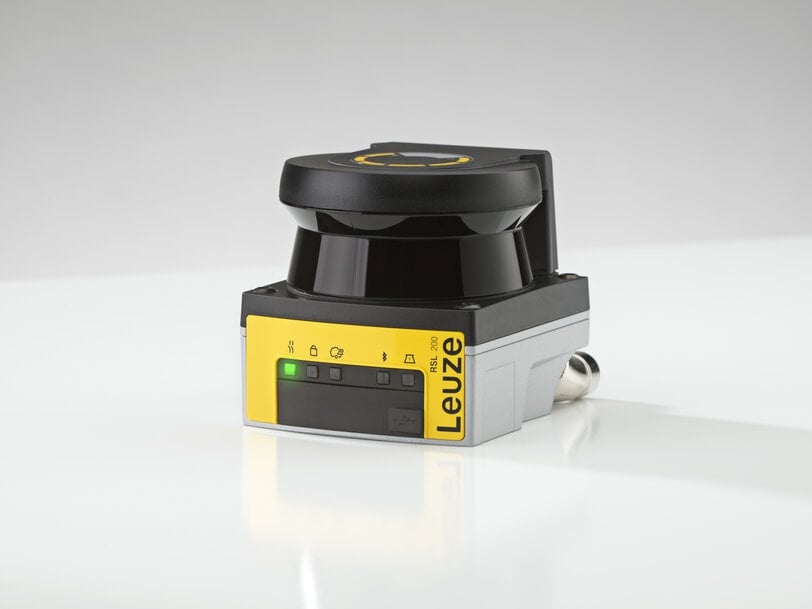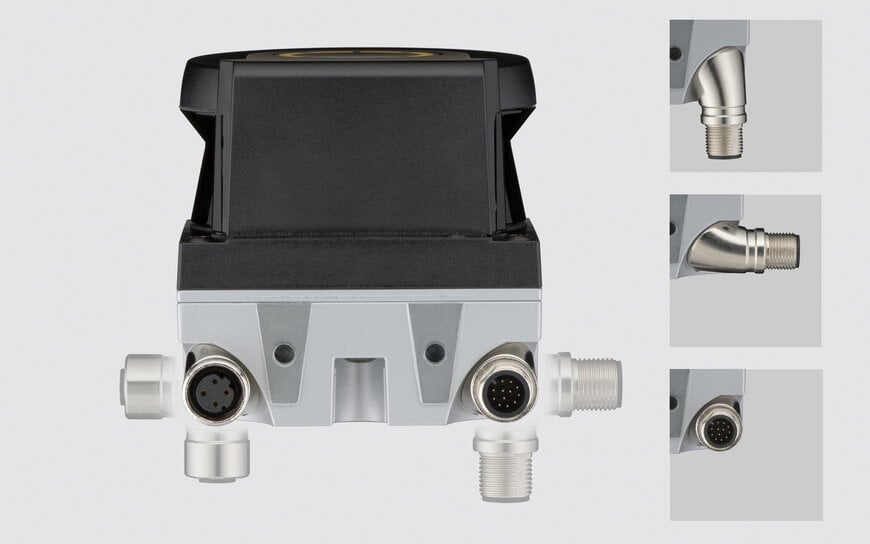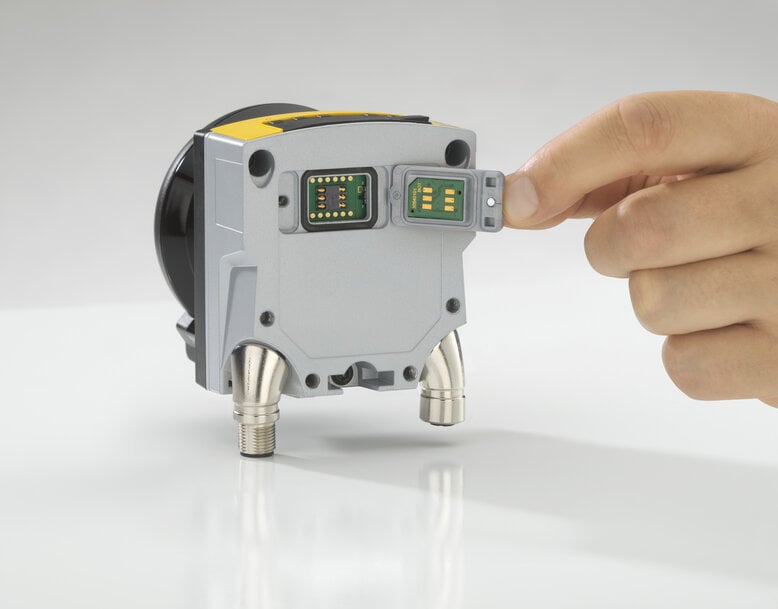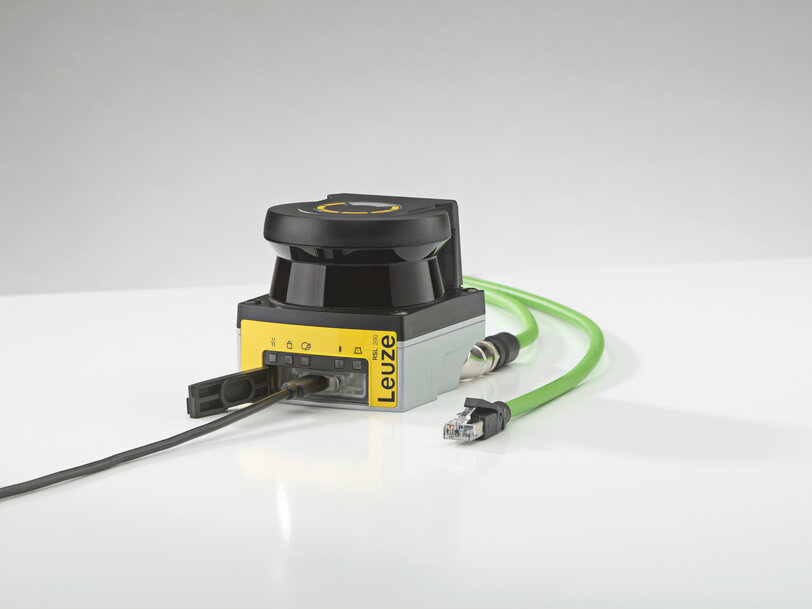The new RSL 200 from Leuze - the smallest safety laser scanner on the market
The new ultra-compact RSL 200 safety laser scanner from Leuze can be integrated effortlessly and used flexibly to safeguard danger zones and access points on narrow production lines, automated guided vehicles and robots.
www.leuze.com

Minimum size, maximum safety
In industrial automation, efficiency and safety must go hand in hand: People, machines and processes must be reliably protected without impairing production processes. However, space is limited in narrow production lines, on automated guided vehicles and robots. This is where the new ultra-compact RSL 200 safety laser scanner from Leuze scores points: As the smallest safety laser scanner on the market, it can be integrated effortlessly and used flexibly to safeguard danger zones and access points.
Safety laser scanners are increasingly in the limelight in almost every industry. This is because the versatile devices are indispensable in many cases to ensure the highest safety standards for the protection of people. Thanks to configurable protective and warning fields, they can be used very flexibly for danger zone and access guarding – for both stationary and mobile applications. A typical area of application is protecting a machine’s dangerous working ranges against access and the presence of persons. Laser safety scanners are also ideal for safeguarding autonomous mobile robots (AMRs) and driverless transport systems, also known as automated guided vehicles (AGVs).

A small but extremely helpful detail: The safety laser scanner’s rotatable connection allows flexible cable routing and therefore space-saving mounting of the RSL 200
Maximum safety in the smallest space: The future of laser scanners
Modern safety laser scanners have to meet a wide range of requirements at once: Besides their main task of safely shutting down machines or systems, they must not impair machine availability or lead to unnecessary downtimes. In addition, laser scanners are expected to have an impressive operating range and scanning angle, while the system operator takes safety classifications in accordance with Type 3, SIL 2 and PLd as given. The system operator must also be able to rely on convenient configuration and diagnostics, which can be carried out effortlessly and intuitively via various interfaces such as Bluetooth, USB or Ethernet TCP/IP. Last but not least, modern safety laser scanners are selected based on their device size. That’s because increasing automation is making spatial efficiency ever more important in many production environments. Systems are becoming more complex, while the space available for safety technology is shrinking. There is often little room for this, especially in mobile use on AGVs.
Innovative solutions are needed to meet these challenges. The Sensor People from Leuze are setting new form factor standards with their advanced safety laser technology that keeps the user as the number one priority. The ultra-compact RSL 200 safety laser scanner is currently the smallest device on the market. It combines state-of-the-art LiDar technology in a minimal space of just 80 x 80 x 86 millimeters. This makes it easy to integrate even in extremely confined spaces, whether in stationary or mobile applications.

Practical to replace: The configuration is quickly and easily transferred to the new device using the removable configuration memory
Simple installation today
The compact safety scanner from Leuze gives the user more options for simple and more flexible installation, especially in confined environments, thanks to its space-saving mounting bracket or connection technology. The right mounting accessories are key to quick integration: That’s why Leuze has developed its own innovative mounting bracket for the RSL 200 to provide effortless fastening and allow the safety laser scanner’s scan level to be aligned horizontally and vertically. Simple servicing is also ensured: The RSL 200 can be replaced quickly and easily with just four screws, and the sensor parameters can be transferred from the old to the new sensor via a memory card without any sensor knowledge required.
Connections and cables must not cause any obstacles either. Rotatable M12 connections on the RSL 200 laser scanner allow extremely flexible cable routing for I/Os, power supply and data transmission. These are essential criteria, particularly for use on small AGVs. The Sensor People also offer a new mobile diagnostics app that allows status information to be conveniently retrieved even if the laser scanner is installed in locations that are difficult or impossible to access.

Communication options via USB and Bluetooth, as well as via TCP / IP with the RSL 230/235, enable flexible configuration and diagnostics
Aligned to your every requirement
For a safety laser scanner to work optimally, its ‘inner’ values are also important. For example, the scanning angle must be large enough to reliably fulfill the application-specific safety task, e.g., to completely cover blind spots or hard-to-see zones behind machines or conveyor belts. It must also be able to safeguard small omnidirectional AGVs/AMRs in every direction – for example, the RSL 200 from Leuze offers a 275-degree scanning angle at an operating range of three meters. The large scanning angle allows the user to ensure all-round protection with just two diagonally positioned devices, even taking mounting tolerances into account.
32 switchable sets of protective and warning fields enable the AGV/AMR user to continuously adjust the speed and direction of travel. The monitored areas can thus be optimally adapted to curved paths, different speeds and various load conditions.
Summary
The next generation of safety laser scanners begins with the RSL200. Thanks to its ultra-compact dimensions, it can be easily integrated even in extremely confined spaces, whether stationary or mobile. Advantages such as the innovative, space-saving mounting bracket and rotatable M12 connections also help here. Plus the mobile diagnostics app from Leuze lets system operators retrieve all status information via Bluetooth conveniently and at any time, even if the laser scanner is installed in an inaccessible or difficult-to-access location.
www.leuze.com

